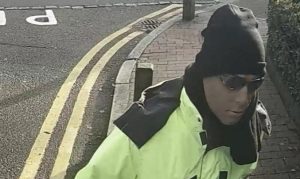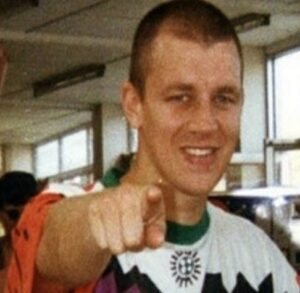Hot Dog Murders: ‘I’ve protested my innocence because I am innocent’
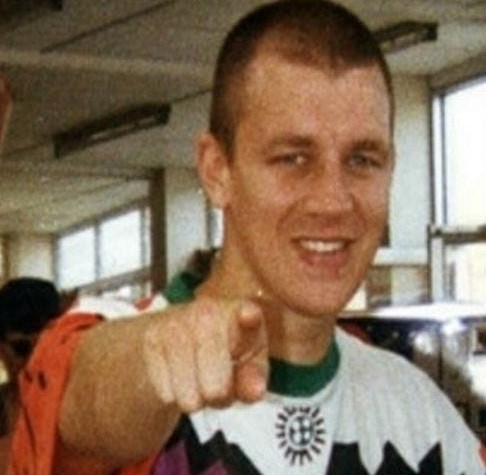
Subscribe for free for twice-weekly true crime articles or become a paid subscriber to get premium content – https://totalcrime.substack.com/
By Chris Summers 1 October 2024
On Friday (27 September) supporters of a man who says he has been wrongly imprisoned for 34 years protested peacefully outside the Criminal Cases Review Commission’s offices in Birmingham.
Warren Slaney (pictured), who was convicted of the “Hot Dog Murders” in Leicester in 1990 wrote to me recently from his cell at HMP Full Sutton in Yorkshire.
I have visited Full Sutton before.
In May 2001 I wrote this article after visiting Michael Steele – convicted of the so-called Essex Boys murders – in Full Sutton.
I’d also visited Jack Whomes at HMP Whitemoor.
The pair – chalk and cheese in terms of personalities – were, in my opinion, wrongly convicted of murdering three Essex drug dealers who were shot dead in the blink of an eye in a Range Rover parked down a country lane in December 1995.
In a room off the visiting suite in Full Sutton, Steele told me back in 2001: “There is not one piece of evidence enough to convict me of the murders. I was not even near the place. There has been a conspiracy.”
But Steele, now 81, remains in prison, awaiting a Parole Board hearing in November this year.
Warren Slaney has been in prison even longer than Steele and, like the so-called Essex Boys pair, has maintained his innocence throughout.
In the letter he wrote to me, Warren said: “I have protested my innocence from day one. That is because I am innocent.”
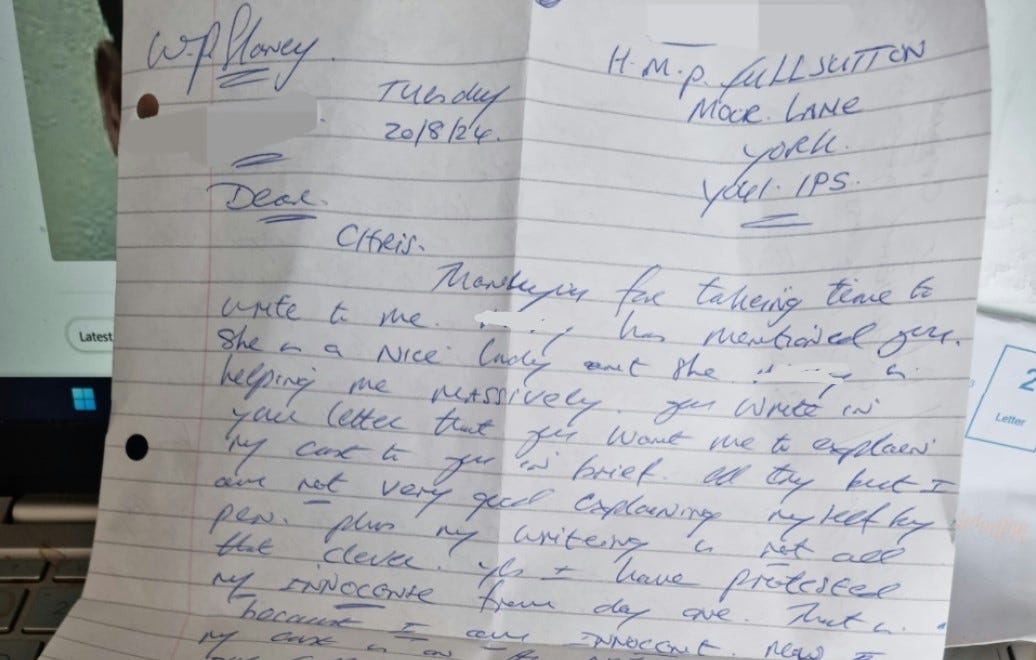
Warren, then 23, was convicted of murdering Gary Thompson, 32, and John Weston, 29, who were shot dead Leicestershire in 1990.
Warren was a former pro boxer but had a record of only one win in five fights and had quit in 1988 after losing his last fight.
The killings were allegedly linked to “hot dog wars” between rival fast food van operators.
It had echoes of Glasgow’s infamous “ice cream wars” in the 1970s, which led to another infamous miscarriage of justice – the wrongful conviction of Thomas “TC” Campbell and Joe Steele.
I met wrote this article in 2001 about that case, and later met TC after his conviction was finally quashed.
But let’s go back to Warren Slaney and the Hot Dog Murders, a title that briefly gave it notoriety in the tabloids.
First I’ll explain the facts of the case.
At 2am on Tuesday 28 August 1990 – after a busy bank holiday weekend – Gary Thompson, 32, and John Weston, 29, were shot dead outside Thompson’s house in Glen Road, Oadby, Leicestershire as the pair got out of Thompson’s Bentley.
The police suggested three men were directly involved in an armed robbery that backfired.
Thompson – one of the biggest operator of hot dog and burger vans in the Midlands – had made lots of enemies in the fast food business.
He was also a bit of a bully who paid low wages to his staff.
Weston, who was from Stoke-on-Trent, had been staying with Thompson in Leicester because his girlfriend was the sister of Thompson’s wife Mavis.
He had been helping Thompson out in the hot dog vans.
Thompson and Weston were first shot in the legs and then finished off with another “volley” of shots.
Thompson died immediately, while Weston lost his fight for life later in hospital.
Between £28,000 and £60,000 in cash, the takings from a bumper weekend, were taken.
The killers were masked but in a scuffle Thompson managed to remove one of their masks.
When Mavis Thompson called the police she identified that man as Terence Burke.
Following the murders it was claimed a man called Ramzy Khachik – who ran the doorman in several Leicester nightclubs – was the Mr Big behind the plot.
Posters went up in Leicester implicating Khachik in the murders.
Khachik belonged to a gun club, has firearms convictions and was questioned by police about the murders because his car had been spotted at the scene two hours before.
In addition, a police tap on his phones, recorded him boasting about the importance of casing an area well in advance of a crime.
Warren went on trial, alongside Burke and a man called Andrew Robinson at Northampton Crown Court in February 1991.
During the trial, Burke testified he had received a call 24 days before the double killing, that an insurance fiddle was going down and Thompson was in on it.
He was told to find someone else to do the robbery with him.
Burke refused to name the person behind the call.
Robinson, who was the getaway driver, testified he was recruited by Burke for £1,000.
But the question always was – who was the third man, with Burke and Robinson that night?
Physical descriptions given by the two eyewitnesses, Mavis Thompson and her sister, do not match Warren’s appearance.
They stated both perpetrators were over six ft tall and of the same build as Gary Thompson, who was about 21 stone (133 kg).
They also said one of the men had a dark tan, a big moustache and a hat with pony tail.
Warren (pictured below) was only five feet eight inches tall, of pale complexion, muscular, clean shaven and had his hair cut short.
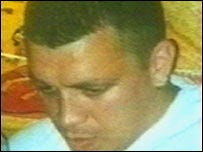
At the trial one witness testified to having seen Warren try on masks immediately before the murders, and said he had later boasted about the crime.
This crucial prosecution witness testified in court to having falsified her statement to the police.
She was subsequently relocated by the police and may have received some of the £100,000 reward money for her testimony, something which was never disclosed at trial.
Burke had arranged for the murder weapon – a Beretta gun – to be disposed of, while the cash from the robbery was found at the home he shared with his girlfriend.
Nine witnesses – some of whom had met Warren for the first time that night – confirmed he was at a party until 4.30am on the morning of the murders.
But his alibi was dismissed by the prosecution and was he found guilty of the murders jailed for life.
Warren was given a minimum tariff of 20 years.
Yet he has so far served 34 years, with no prospect of parole.
Burke also got life but got out after 15 years.
The Warren Slaney campaign group, who have been to get Warren’s conviction quashed, have highlighted a number of troubling issues with the case.
* The man who disposed of the gun for Terence Burke admitted Warren had nothing to do with the murders. Despite being crucial to the outcome of the trial, this witness was never called nor was his statement supplied to the court.
* There was no forensic evidence to link Warren to the murders, despite the police searching his home four times.
* Crucial evidence relating to Warren’s innocence was not brought up in court. His QC was reportedly only briefed a few weeks before the trial, giving him inadequate time to prepare for a double murder trial.
* The shots fired from the Berretta handgun displayed a great degree of accuracy but Warren had previously suffered hand injuries, which resulted in the insertion of metal plates. He would not have been even capable of pulling the trigger.
His defence barrister said at his trial Burke and Robinson were under pressure to blame someone else and said Warren was not in Oadby on the night of the murder.
A flaw in Warren’s defence was that he misremembered his alibi – mixing up the dates and telling the police he was at his mother’s that night, when he was actually at a party at his aunt’s house.
Khachik, who was later convicted of drug dealing offences, appeared on Shaun Attwood’s YouTube programme three years ago and denied any involvement in the Hot Dog Murders.
In his YouTube appearance Khachik, speaking with a hint of a Leicester accent, said Thompson could make £150,000 on a good weekend, in cash but he said the police were unable to pin it on him.
He joked: “First they said I did it, then they said I was behind it, then they said I supplied the gun and then they said I supplied the packed lunch.”
Khachik, who was born in Iraq but came to England as a four-year-old, told Attwood someone was a police informer and became an “agent provocateur” with the police.
“He tried to rile me into saying something.” Khachik said of the informer, whose name was bleeped out by Attwood.
Khachik claimed the informer doctored the police posters which had been put up after the murder to say Khachik was responsible.
I also know the name of that informer but I will not be using it for legal reasons.
I will refer to him instead as Mr A.
Warren, in his letter to me, said: “Now I have been fitted up by enemies because I was an up-and-coming guy and they feared me, Khachik and co.”
He said: “I do not know Mr A, only from the legal papers.”
Warren told me: “On the night the crime took place I was over the other side of Leicester at a party. Witnesses to prove this. There is no forensics, no independent witneses, no ID.”
In his letter, he writes: “Everyone else involved in the crime had something to do with Ramzy Khachik. I was an enemy of Khachik and he wanted me out of the way.”
In August 1995 leave to appeal was sought on the grounds of Warren having an allegedly “incompetent defence.”
But two weeks before the appeal hearing a defence solicitor had his papers stolen.
In July 1996 the court took just 20 minutes to dismiss Warren’s appeal.
Warren told me: “The CCRC will not give me access to the HOLMES (Home Office Large Major Enquiry System) database because they do not want me to see what is on it because I am sure things are on it which will prove my innocence.”
“The police claim they lost all the HOLMES data paperwork, plus the CCRC will not say who received the reward money,” he added.
Warren, who is still a Category A prisoner. said he believes he will never get parole and told me: “The only way I will get out is if my innocence is proved at the appeal courts.”




